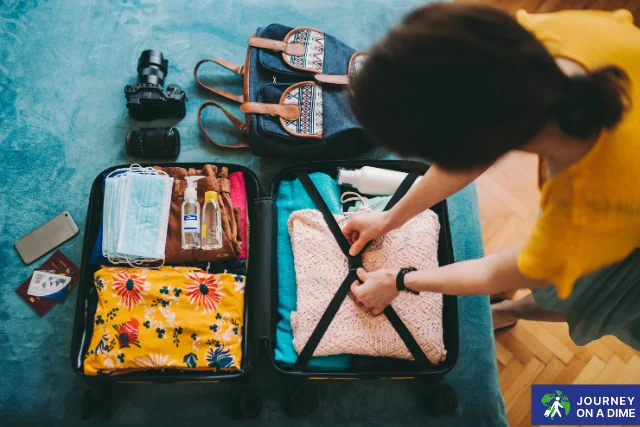10 Must-Know Tips for First-Time Travelers – Travel Guide

If you’re dreaming of leaving your hometown behind but feel intimidated by the maze of bookings, check-ins, and security lines, you’re not alone. Every seasoned globetrotter started somewhere, and this Travel Guide distills years of “rookie-mistake” wisdom into clear, practical steps. By the time you finish reading, you’ll know how to plot an itinerary that won’t overwhelm you, glide through U.S. airport checkpoints, and maximize every dollar—without turning the trip into a spreadsheet marathon. Keep this Travel Guide handy on your phone; refer back whenever wanderlust (or panic) strikes.
Tip 1: Define a Purpose and a Budget
The first timer’s biggest trap is trying to see “everything.” Begin by answering two questions: What experience do I want most, and what can I realistically spend? If your goal is “soak up local culture in New Orleans for four nights with food at mid-range restaurants,” you can reverse-engineer costs for flights, lodging, meals, and activities. A purpose-driven plan stops scope creep before it starts and helps your Travel Guide stay focused.
Tip 2: Lock in Identification Early
Since May 7, 2025, the Transportation Security Administration requires a REAL ID-compliant driver’s license or another accepted document (passport, military ID) to board domestic flights in the United States. Check for the gold or black star in the upper-right corner of your license and renew if necessary at least two months before departure. tsa.gov
Tip 3: Time Your Flight Search
Airfare prices follow patterns. For domestic U.S. routes, set fare alerts 60–90 days before departure; for international trips, 120–180 days is safer. Use flexible-date features on Google Flights or Hopper, then pounce when prices drop more than 10 percent from the monthly average. Your Travel Guide rule of thumb: cheap seats rarely last 24 hours.
Tip 4: Choose Nonstop or Smart Layovers
Nonstops reduce stress, but if cost or distance forces a layover, pick airports with amenities that boost comfort—free Wi-Fi, plentiful dining, and, if you’re connecting internationally, clearly marked customs re-check counters. Build at least 90 minutes for domestic-to-domestic transfers and 150 minutes when changing from an international to a domestic flight.
Tip 5: Pack Light, Pack Right
The lighter you travel, the freer you feel. Aim for one carry-on and one personal item. Roll clothing, nest socks inside shoes, and lean on a neutral capsule wardrobe: two bottoms, three tops, one layer, one pair of versatile shoes. Keep TSA-size toiletries in a clear quart bag at the top of your suitcase. Veteran travelers call this the “15-minute hotel drop”—you can be out exploring a new city that quickly. Whenever you tweak your setup, update the packing checklist in your Travel Guide notes app.
Tip 6: Book Accommodation for Convenience, Not Only Price
A budget motel an hour from a city center may cost you more in ride-shares and lost time than a slightly pricier downtown hotel. Study public transit maps before reserving. Read recent guest reviews, focusing on cleanliness, Wi-Fi reliability, and noise. Tools like Google Street View let you virtually walk the neighborhood, ensuring you’ll feel safe stepping out for late-night snacks.
Tip 7: Master Airport Security Etiquette
Speed through TSA checkpoints by wearing slip-on shoes, stowing metal accessories in your bag before the queue, and placing laptops and liquids in the top pocket for swift removal. Enroll in TSA PreCheck or Global Entry if you plan to fly more than twice a year; the investment shaves precious minutes and converts pre-flight stress into calm confidence. Think of this Travel Guide mantra: “No surprises at security.”
Tip 8: Stay Healthy and Connected
Dehydration and jet lag can sabotage a short vacation. Drink eight ounces of water every flight hour, decline alcohol until you land, and set your watch to the destination time zone as soon as you board. Download offline city maps and your boarding passes in a cloud folder. Dual-port chargers and a compact power bank keep your phone—and this Travel Guide—available during long sightseeing days.
Tip 9: Respect Local Culture
Americans often stand out abroad by volume and tipping habits. Learn “hello,” “please,” and “thank you” in the local language; observe dress codes at religious sites; and ask permission before photographing people. Currency-rounding apps help you avoid fumbling coins at checkout. A culturally aware traveler earns goodwill—and sometimes insider recommendations—from locals.
Tip 10: Reflect and Adapt
Each trip teaches lessons textbooks never cover. Keep a short daily journal: one highlight, one challenge, and one adjustment for next time. Review entries when planning your next adventure so your Travel Guide evolves with you. Over multiple journeys, you’ll graduate from “first-time” to “frequent flyer,” armed with customized tips that fit your travel style.
Frequently Asked Questions (FAQs)
1. How many times should the phrase “Travel Guide” appear for best SEO?
Around 0.5 percent of your total word count. For a 1,700-word article, eight or nine mentions strike the balance between relevance and keyword stuffing.
2. Do I need travel insurance for domestic trips?
If you prepay non-refundable hotels or flights, a budget policy covering trip interruption and lost baggage is wise. For international travel, medical coverage is essential.
3. What happens if I forget my REAL ID at the airport?
You must present an alternate acceptable ID (passport, DHS trusted traveler card). Without it, TSA may still allow travel after extensive identity verification, but expect long delays and possible denial.
4. When should I exchange currency?
Order small amounts from your bank before departure for convenience, then use local ATMs at your destination for better rates. Avoid airport exchange kiosks with high fees.
5. How early should I arrive at the airport?
For domestic U.S. flights, two hours is still standard; add 30 minutes if traveling at peak holiday times. For international flights, arrive at least three hours early.
6. Is it safe to use public Wi-Fi abroad?
Public networks can be risky. Use a reputable VPN to encrypt data, and avoid logging into bank accounts on café Wi-Fi.
Image Source: Canva








